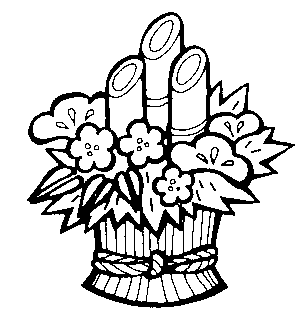. koyomi 暦 Japanese calendars - Introduction .
:::::::::::::::::::::::::::::::::::::::::::::::::::::::::::::::::::::::::::::::::::::::::::::::::::::::::::::::::::::::::::::::::::::::::::::::::::::::::::::::::::::::::::::::::::::
Edo Saijiki 江戸歳時記

by 宮田登
. koyomi 暦 Japanese calendars - Introduction .
..............................................................................................................................................

CLICK for more samples .
Tooto Saijiki 東都歳時記 Saijiki of the Eastern Capital (Edo)
- a summer scene
Compiled by 斎藤月岑 Saito Gesshin from 江戸神田雉子町, published in 5 volumes in 1838.
..............................................................................................................................................

浮世絵に見る江戸の歳時記 - 佐藤要人 - Saijiki of Ukiyo-E prints
..............................................................................................................................................
In the old lunar calendar of the Edo period,
spring lasted from the first month to the third,
summer from the fourth month through the sixth,
autumn from the seventh month through the ninth,
winter from the tenth month through the twelfth.
. WKD : The Asian Lunar Calendar and the Saijiki .
. The History of Japanese Saijiki .
chronicles of regional yearly events
:::::::::::::::::::::::::::::::::::::::::::::::::::::::::::::::::::::::::::::::::::::::::::::::::::::::::::::::::::::::::::::::::::::::::::::::::::::::::::::::::::::::::::::::::::::

Tokyo Metropolitan Library.
Woodblock prints during the four seasons
- - - - - Spring
First Sale on the Second Day of New Years in Nihonbashi
New Years by Hanabusa Itcho
Umeyashiki
Osan, the Day of the Horse in Umemizuki (February)
Jikkendana
Hanami in Goten-yama
Asakusa Festival
- source : www.library.metro.tokyo.jp/portals
The Ten Doll Stores (Jukkendana)
- quote -
Jikkendana 十軒店(じっけんだな)
This picture depicts a lady holding the hina doll's crown in front of the dairibina, dolls representing the Emperor and Empress, and the scenery of Jikkendana is depicted in the picture in the frame. In Jikkendana, there are lines of shops selling dairibina and bald dolls for the Momo Festival of the third month on the lunar calendar and warrior figurines and carp banners for the Tango Festival of the fifth month of the lunar calendar.
Jikkendana was located where Nihonbashi Muromachi in Chuo Ward is today and it is said to be so called because 10 shops (jikken) lined both sides of the street.
Throughout Edo, hina markets that sold hina dolls (a set of dolls for the hinamatsuri festival consisting traditionally of members of the Imperial court) were held in places such as Owaricho, Asakusa Kaya-cho and Komagome, but it was Jikkendana that was most successful.
During around the Meiwa years (1764-1772), the doll maker Shugetsu Hara made the kokin-bina dolls. It is said that these kokin-bina dolls were related to the hina dolls of today.
In the Edo period, there was such a diversity of dolls created that the shogunate banned the making of dolls that were excessively extravagant.
- source : Tokyo Metropolitan Museum -
. 十軒町 Jikkencho in Akashicho 明石町 Akashi district, Chuo ward .
. 本所柳島十軒川 Yanagishima Jikkengawa in Honjo .
「内裏雛人形天皇の御宇かとよ」
Matsuo Basho 芭蕉
「十軒が十軒ながら公家の宿」
Edo Senryu 江戸川柳
季節に応じて商う十軒の店舗と、その前の大通りに縁日の露店を出して賑わったことから「十軒店」の地名となった。
- reference source : wako226.exblog.jp -
..............................................................................................................................................
- - - - - Summer
The first bonito pick at Nihonbashi
Fourth Month of the Lunar Calendar (Unohana-zuki)
The first banner in Satsuki (the fifth month of lunar calendar)
Ryōgoku Fireworks
Sanno Festival (Sanno Gosairei-zu)
- source : www.library.metro.tokyo.jp/portals
. Horikiri Shōbu and 堀切菖蒲園 Iris Park .
. Pilgrimage to Teppozu Inari Shrine 鐵砲洲稲荷神社 .
. tokoroten uri ところてん売り vendor of Tokoroten .
..............................................................................................................................................
- - - - - Autumn
the Genji Twelve Months: the Beginning of Autumn
The City Flourishing, the Tanabata
Shin-Yoshiwara Hassaku Shiromuku
Listening to the Insects at Dōkan-yama
Chrysanthemum moon (Kiku-zuki)
Kandamyōjin Festival
- source : www.library.metro.tokyo.jp/portals
..............................................................................................................................................

"Winter Accommodation, Seasonal Rite of Cleaning Up
(Fuyu no Yado Karei no Susuhaki)"
Painted by Utagawa Toyokuni III 1855 (Ansei 2)
- - - - - Winter
Yaburu, Ebisu-ko Festival in Kanna-zuki
tinged autumn leaves in the Kaian-ji Temple
shichigosan, a gala day for children of three, five and seven years of age
Kaomise Performance by Great Actors
Tori no ichi, a fair held on the day of Rooster, a Famous Rake (kumade)
Asakusa - year-end fair
- source : www.library.metro.tokyo.jp/portals
:::::::::::::::::::::::::::::::::::::::::::::::::::::::::::::::::::::::::::::::::::::::::::::::::::::::::::::::::::::::::::::::::::::::::::::::::::::::::::::::::::::::::::::::::::::
Another regular joy and ritual event (saiji 祭事)were the many
ennichi 縁日 monthly festival and prayer days
at most temples and shrines.
They often were combined with a fair selling specialities of the area and gave the Edokko 江戸っ子 "children of Edo" a chance for an outing.
For example two days, during the New Year and O-Bon :
. Sainichi 斎日, さいにち Fasting day, sixteenth day .
on the day of Enma 閻魔王 King of Hell
:::::::::::::::::::::::::::::::::::::::::::::::::::::::::::::::::::::::::::::::::::::::::::::::::::::::::::::::::::::::::::::::::::::::::::::::::::::::::::::::::::::::::::::::::::::
. The First Lunar Month 一月 ichigatsu - 睦月 mutsuki - in Edo .
. The Second Lunar Month 二月 nigatsu - 如月 kisaragi - in Edo .
. The Third Lunar Month 三月 sangatsu - 弥生 yayoi - in Edo .
. The Fourth Lunar Month 四月 shigatsu - 卯月 uzuki - - in Edo .
. The Fifth Lunar Month 五月 gogatsu - 皐月 satsuki - .
. The Sixth Lunar Month 六月 rokugatsu 水無月 minazuki - .
. The Seventh Lunar Month 七月 shichigatsu - 水無月 minazuki - .
. The Eighth Lunar Month 八月 hachigatsu - 葉月 hazuki - .
. The Ninth Lunar Month 九月 kugatsu - 長月 nagatsuki - .
. The Tenth Lunar Month 十月 juugatsu - 神無月 kannazuki - .
. The Eleventh Lunar Month 十一月 juuichigatsu - 霜月 shimotsuki - .
. The Twelfth Lunar Month 十二月 juunigatsu - 師走 shiwasu - in Edo .
- source : art.jcc-okinawa.net/okinawa/edonosiki
- TBA -
:::::::::::::::::::::::::::::::::::::::::::::::::::::::::::::::::::::::::::::::::::::::::::::::::::::::::::::::::::::::::::::::::::::::::::::::::::::::::::::::::::::::::::::::::::::
- - - - - H A I K U and S E N R Y U - - - - -
Edo Saijiki -
the joy of finding
new friends
Gabi Greve, January 01, 2014
..............................................................................................................................................

川柳江戸歳時記 - Senryu Saijiki - 花咲 一男
. senryu, senryū 川柳 Senryu poems in Edo .
:::::::::::::::::::::::::::::::::::::::::::::::::::::::::::::::::::::::::::::::::::::::::::::::::::::::::::::::::::::::::::::::::::::::::::::::::::::::::::::::::::::::::::::::::::::

- - - To join me on facebook, click the image !
:::::::::::::::::::::::::::::::::::::::::::::::::::::::::::::::::::::::::::::::::::::::::::::::::::::::::::::::::::::::::::::::::::::::::::::::::::::::::::::::::::::::::::::::::::::

source : tabineko.seesaa.net/article
日本の歳時記 - Edo Saijiki Koyomi 江戸歳時記暦 Calendar Saijiki
with a Daruma san !
江戸歳時記 - TBA
- source : edococo.exblog.jp
:::::::::::::::::::::::::::::::::::::::::::::::::::::::::::::::::::::::::::::::::::::::::::::::::::::::::::::::::::::::::::::::::::::::::::::::::::::::::::::::::::::::::::::::::::::
. Japanese Architecture - cultural keywords used in haiku .
. - Doing Business in Edo - 商売 - Introduction .
[ . BACK to DARUMA MUSEUM TOP . ]
[ . BACK to WORLDKIGO . TOP . ]
#edosaijiki #Jikkendana #jukkendana
:::::::::::::::::::::::::::::::::::::::::::::::::::::::::::::::::::::::::::::::::::::::::::::::::::::::::::::::::::::::::::::::::::::::::::::::::::::::::::::::::::::::::::::::::::::













































